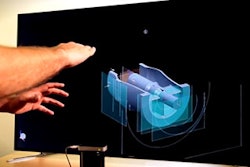Automated and robotic machines for manufacturing operations can pose design challenges. Pioneered in automotive manufacturing plants, control automation has made significant headway into many industries. Automated systems optimize space and productivity, performing tasks that might otherwise require extensive manual labor. Automation standards have vastly improved industry-wide machine programming consistency and advanced open system architectures, so today’s users have better equipment and software choices. The expansion of automation into broader applications has spurred demand for smarter, more efficient drives, controls and software tools. Staying ahead of the technological curve requires leveraging state of the art tools.
Tool 1: Modular Code
Consider that roughly eighty percent or more of new machine tasks reflect a variation of past tasks. So, software for a new machine can be generated quickly using code developed for previous generations of machines. Use of modular code programming relies on a control system and modular hardware, but the impact in terms of design freedom and reduction of machine or system design resources is phenomenal.
Modular programming has gained traction in automation control by providing software design modules that conceptually represent desired machine tasks. Application templates and software modules support efficient development of control software to handle most engineering requirements for standardized machine modules. An application template provides the basic structures, while allowing users to create their own machine modules. Software modules created using application templates can be modified and assembled with minimal effort, creating complete customizable systems with modules that can be reused to further drive down costs.
Tool 2: Integrated Hardware Sets
Machine design by definition is customized to the requirements of a task or set of tasks. Whether optimizing an existing machine, developing a new machine, or designing an end-to-end automation system, successful execution requires machines handle more extensive motion control tasks with greater speed. In drafting automation concepts, the approach should be to “let the machine decide.” Whether an automation system for central (controller-based) or decentralized (drive-based) motion control, the individual system elements should be optimally matched, while meeting the highest quality and efficiency standards.
To optimize motion control efficiency and achieve scalability through precision performance matched components, it’s important to ensure the right gear box, pairing the right motor and drive. Equipped with options that may include L-force control and software, memory modules, online diagnostics and integrated safety systems, scaled lines of frequency inverters enable the exact matching of speed and torque requirements. It is important to ensure optimal motor voltage and operational efficiency.
Synchronization at the hardware level enables seamless integration of high dynamic drives. The latest inverter drives on the market offer improved functionality for motion control including automatic axis bus to enable easy construction of direct and cascade configurations. This optimizes the bus bandwidth through synchronization at the hardware level. While technology convergence is evident at the hardware level, with leading vendors developing hardware modules, simply linking hardware is insufficient to optimize performance. The challenge remains to dovetail hardware sets that require parameterization at multiple levels, such as between a motor and drive, drive to controller, controller to HMI, etc. Modularization requires a modularized development environment. Drive solution design tools can simplify the process of drive dimensioning and energy optimization.
Tool 3: Industrial Communications
Industry is trending toward high-speed field bus data rates. Modular industrial communications protocols are critical to incorporating machine components and ensuring an efficiently networked system. There are multiple open networks with proven performance in a broad range of applications. The AS interface might be considered the easiest approach to industrial networking. InterBus can establish connections quickly in major installations. ProfiBus is totally universal and suitable for any large machine application. CANOpen offers a fast, easy networking system for multiple components. EtherCAT, ProfiNet and EtherNet/IP provide a seamless exchange of information.
Newer inverters on the market are equipped with an on-board field bus (CANOpen or EtherCAT) or may be expandable via pluggable communication modules. The user can customize solutions using the most suitable field bus for an application. Global drive controllers with integrated technology functions offer easy avenues for selecting a preferred technology and simple configuration. The inverter, register control, cam profile generator and positioning control, for example, can each be equipped with a uniform user interface. Such integrated technology functions can form a vital part of an intelligent automated drive solution.
Ultimately, people are at the core of new innovations in machine automation for manufacturing. Engineers face rapidly evolving and converging technologies, compounded by stiff competition driving faster times to market for increasingly complex machine designs. It is worth noting that industrial network communications architecture and hardware platforms can and should be independent decisions based on the best available technologies. The more important decision is selection of a support team and supplier that can offer a powerful “agile software” structure to integrate existing and future system components efficiently and sustainably. The right tools can streamline the design process and translate into better designs with lower total cost of ownership, from implementation to commissioning to maintenance.
To learn about Lenze Americas, please visit www.lenzeamericas.com.























